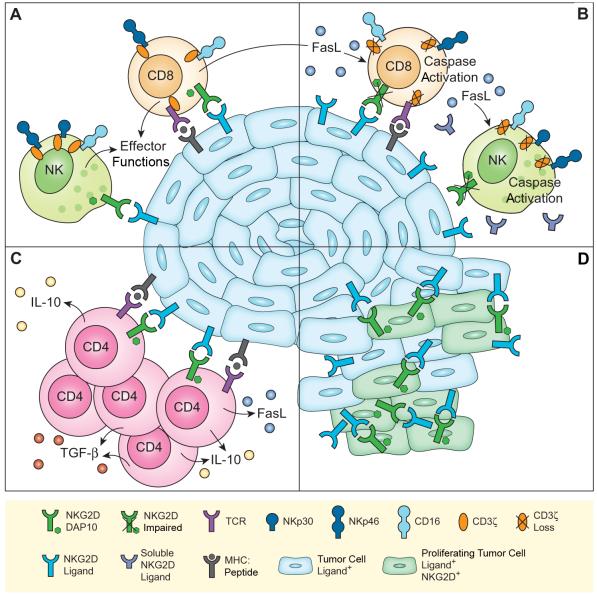FIGURE 1.
Schematic representation of NKG2D/ligand-mediated effects in cancer settings. (A) Tumor-associated NKG2D ligands trigger effector functions of NK cells and, via costimulation, of CD8 T cells. NKG2D-mediated CD8 T cell stimulation triggers FasL release. At this stage, the TCR, CD16, and the NKp30 and NKp46 NCRs are functionally expressed in complex with CD3ζ. (B) Persistence of tumor cell membrane-bound and soluble NKG2D ligands cause NKG2D downmodulation and functional impairment. Still functional NKG2D (see A and C) initiates FasL/Fas-mediated caspase activation and resultant CD3ζ loss. As a consequence, the functional capacities of the TCR, CD16, and NKp30 and NKp46, which all signal through CD3ζ, are impaired. (C) NKG2D costimulates proliferation, and IL-10, TGFβ and FasL release by immunosuppressive NKG2D+CD4+ T cells. (D) NKG2D+ cancer cells proliferate in response to autocrine NKG2D-mediated stimulation. See text for further explanations.

